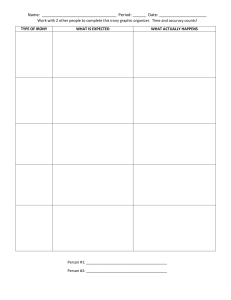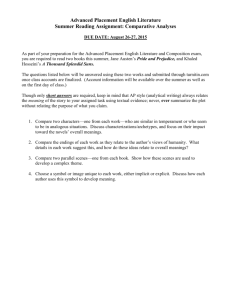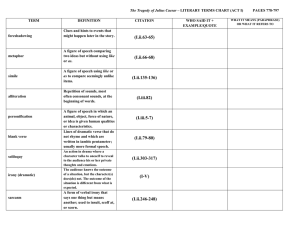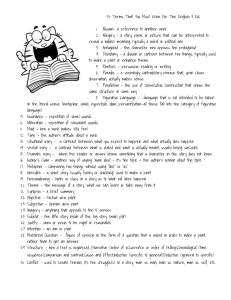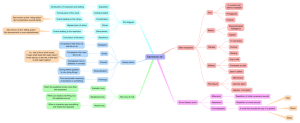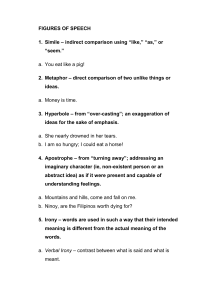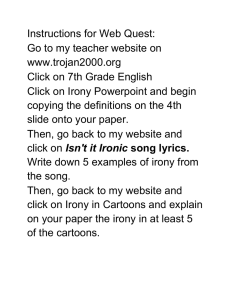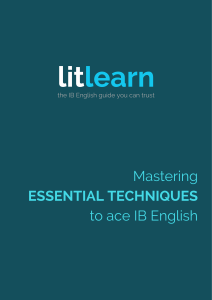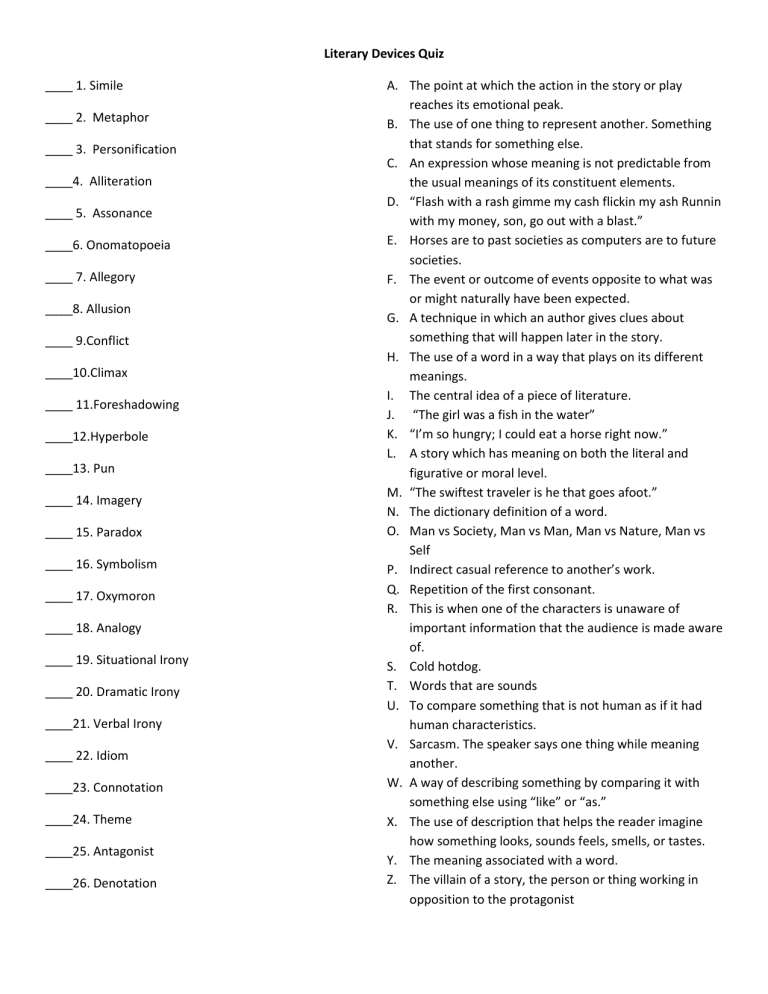
Literary Devices Quiz ____ 1. Simile ____ 2. Metaphor ____ 3. Personification ____4. Alliteration ____ 5. Assonance ____6. Onomatopoeia ____ 7. Allegory ____8. Allusion ____ 9.Conflict ____10.Climax ____ 11.Foreshadowing ____12.Hyperbole ____13. Pun ____ 14. Imagery ____ 15. Paradox ____ 16. Symbolism ____ 17. Oxymoron ____ 18. Analogy ____ 19. Situational Irony ____ 20. Dramatic Irony ____21. Verbal Irony ____ 22. Idiom ____23. Connotation ____24. Theme ____25. Antagonist ____26. Denotation A. The point at which the action in the story or play reaches its emotional peak. B. The use of one thing to represent another. Something that stands for something else. C. An expression whose meaning is not predictable from the usual meanings of its constituent elements. D. “Flash with a rash gimme my cash flickin my ash Runnin with my money, son, go out with a blast.” E. Horses are to past societies as computers are to future societies. F. The event or outcome of events opposite to what was or might naturally have been expected. G. A technique in which an author gives clues about something that will happen later in the story. H. The use of a word in a way that plays on its different meanings. I. The central idea of a piece of literature. J. “The girl was a fish in the water” K. “I’m so hungry; I could eat a horse right now.” L. A story which has meaning on both the literal and figurative or moral level. M. “The swiftest traveler is he that goes afoot.” N. The dictionary definition of a word. O. Man vs Society, Man vs Man, Man vs Nature, Man vs Self P. Indirect casual reference to another’s work. Q. Repetition of the first consonant. R. This is when one of the characters is unaware of important information that the audience is made aware of. S. Cold hotdog. T. Words that are sounds U. To compare something that is not human as if it had human characteristics. V. Sarcasm. The speaker says one thing while meaning another. W. A way of describing something by comparing it with something else using “like” or “as.” X. The use of description that helps the reader imagine how something looks, sounds feels, smells, or tastes. Y. The meaning associated with a word. Z. The villain of a story, the person or thing working in opposition to the protagonist
